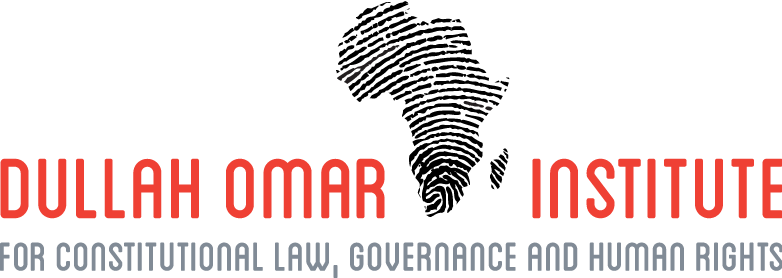The role of PPPs in addressing learners’ or graduates’ absorption into the local government labour market
Partnerships between the three spheres of government (and their entities), with private sector companies, has become an important strategic thrust in public policy. Some of these partnership agreements have a skills development component in them whereby in addition to implementing a public service, people are trained, and capacity is built. Other partnership agreements are solely focused on skills development in which a public body and private entity form a partnership to implement skills development programmes.
The Local Government Sector Education and Training Authority (LGSETA) has commissioned research to explore the extent to which PPPs can be used by municipalities as a means of improving the absorption levels of those trained. This study included an international literature review, a survey of Human Resource Development (HRD) units in local municipalities, and some case study research in several PPPs in local government.
Key findings
Key factors in successful PPPs
International research shows that successful PPPs have some key characteristics in common. These are:
- Government support in promoting PPPs: There is a need for government to be seen as supporting PPPs, to create a sustainable market. The establishment of a central PPP financing fund can assist, as well as tax incentives.
- An enabling regulatory framework: This can include procurement processes, public finance management regulations and legal mechanisms to resolve disputes.
- Institutional form: A central PPP Unit or another governance structure to focus on policy research, project management, promotion, capacity building, information collection and disclosure, amongst others.
- A capable private sector: The private sector takes some of the risks of the PPP in financing, developing and implementing a PPP.
- A capable and engaged public sector: PPP projects require advanced skills to identify, assess, procure and implement PPP projects.
- PPP agreements often require feasibility studies: including needs analysis, an option analysis, a legal due diligence exercise and a comparison with a public sector model.
- In relation to HRD within a PPP, internationally successful PPPs are underpinned by an education and training system that integrates theory-based learning and practical training.
PPP implementation in South African municipalities
Many different approaches are followed in establishing a PPP, but above all what remains important for the successful development of the participants in any PPP is a clear HRD programme and implementation plan. This plan includes the requirements for participation in the programme, the roles and responsibilities of all parties in the PPP, the structure of the training to be implemented, the requirements for completion and the various programme monitoring requirements, amongst others. The learning programme most implemented in PPPs are internship programmes in which work experience is provided after the completion of studies at a university or a TVET college. Learnerships are also common.
Impact
The PPPs studied were successful in keeping a high percentage of participants in the programme and thereafter completing the learning programmes.
In relation to absorption, there is evidence of successful completion leading to employment. Employers who participated in a PPP on the basis that they were training for their own needs wanted to employ successful graduates. In some municipalities, the need was so great that interns failed to complete their internship before being offered a job. The focus on artisan trades that are in short supply also assisted. One of the PPPs included a French company that gave previous municipal employees opportunities to experience work in France. This company clearly saw HRD as critical to its success as a company. Many people went on to obtain promotion and higher pay, in the context of a contract that continued to expand as demand for water increased. In the professional sphere, many interns went on to obtain professional registration, an important step in their careers.
Whilst there was good absorption in the PPPs studied in the case studies, in the survey the general levels of absorption were much lower - with only 5% of municipalities employing more than 60% of participants and 27% of municipalities not employing any participants. In most cases, there were no vacancies within the municipality and no budget for new appointments. On the other hand, the survey confirmed that skills development in PPPs results in improved skills capacity within the municipality, improved service delivery and improved skills for the participants.
Programme Monitoring and Evaluation
Most of the Skills Development Facilitators (SDFs) in municipalities are not aware of PPPs within their municipalities, and so are not involved in the monitoring of the skills development component within PPPs. Monitoring is critical in several aspects.
- The project funder must account for funds spent, cost per trainee, and value for money.
- The SETA and/or quality council must monitor quality.
- The project implementer must monitor and report on participants, throughput etc.
- Employers need to ensure that the participants get the required experience.
- In the PPPs studied, a reference group or steering committee oversees monitoring of the programme.
Enablers of success and challenges
PPPs play a direct role in ensuring that learners or graduates obtain work experience within the local government sector. Some of the key characteristics for the successful implementation of skills development programmes present in the case study PPPs are:
- Programmes based on demand.
- Ownership by the partners to the PPP with roles and responsibilities clearly defined.
- Project governance in place (steering committee or reference group).
- A clearly defined structure of the skills development programmes - allowing for proper monitoring of the training programmes.
- Sufficient funding.
- Efficient programme monitoring.
Similar enablers were identified in the survey as being critical, with ownership of the project by municipal leadership being key. This is followed by good planning and good coordination amongst PPP partners. Forming a good relationship between the public and private parties, based on mutual needs and benefits, is an important contributor to effectiveness in PPPs. Involvement of the SETA is also important. Survey responses indicate that the main challenge with implementing skills development programmes in PPPs are administrative (40%), with delayed payments and administrative problems with SETAs contributing to this. Another challenge is capacity constraints within the public sector partner - lack of administrative and technical know-how and high staff turnover. This inhibits the municipality’s project oversight and monitoring capacity. Some municipalities do not have the necessary capacity to train or to implement training programmes. This is often resolved by the private party taking on the training implementation role.
Recommendations
Recommendations are made in relation to policy and strategy, HRD planning and PPPs, PPP implementation, and PPP monitoring.
Policy and strategy: The LGSETA should view PPPs as a route to expanded workplace learning, and an opportunity to improve absorption of graduates from SETA-funded programmes. There should also be some engagement on how to strengthen, implement and monitor human resource development in PPPs.
HRD planning and PPPs: Municipal SDFs should have skills development within PPPs as part of their responsibility. Also, municipal SDFs should be brought into the process of HRD planning in PPPs. Budget processes should explore the extent to which funding can be made available to fill posts once a programme of training or internship has been completed.
PPP implementation: The LGSETA should support municipalities with interventions to strengthen the oversight capacity of municipalities engaging in PPPs. Furthermore, parties to a PPP should contract jointly to meet and monitor HRD within PPPs.
In terms of SETAs, there are several recommendations:
- Partnerships are needed with other SETAs to be able to assist PPP private sector partners to access skills development funding from their line SETA.
- There is a need for inter-SETA agreements on how the shared responsibilities within PPPs will be managed.
- The roles of national staff and provincial SETA staff involved in PPPs should be made clear.
- National PPPs with a provincial component should be explained early to provincial managers.
PPP monitoring
- The HRD component of a PPP should have an agreed implementation plan.
- Oversight structures should be established of the HRD stakeholders.
- Monitoring processes should be put in place to track progress, identify problems and initiate interventions as necessary.
- Efforts should be made to monitor absorption and conduct periodic tracer studies.
This article is part of a series reporting on research commissioned by the Local Government Sector Education & Training Authority (LGSETA) (Contact: matodzir@lgseta.org.za)

